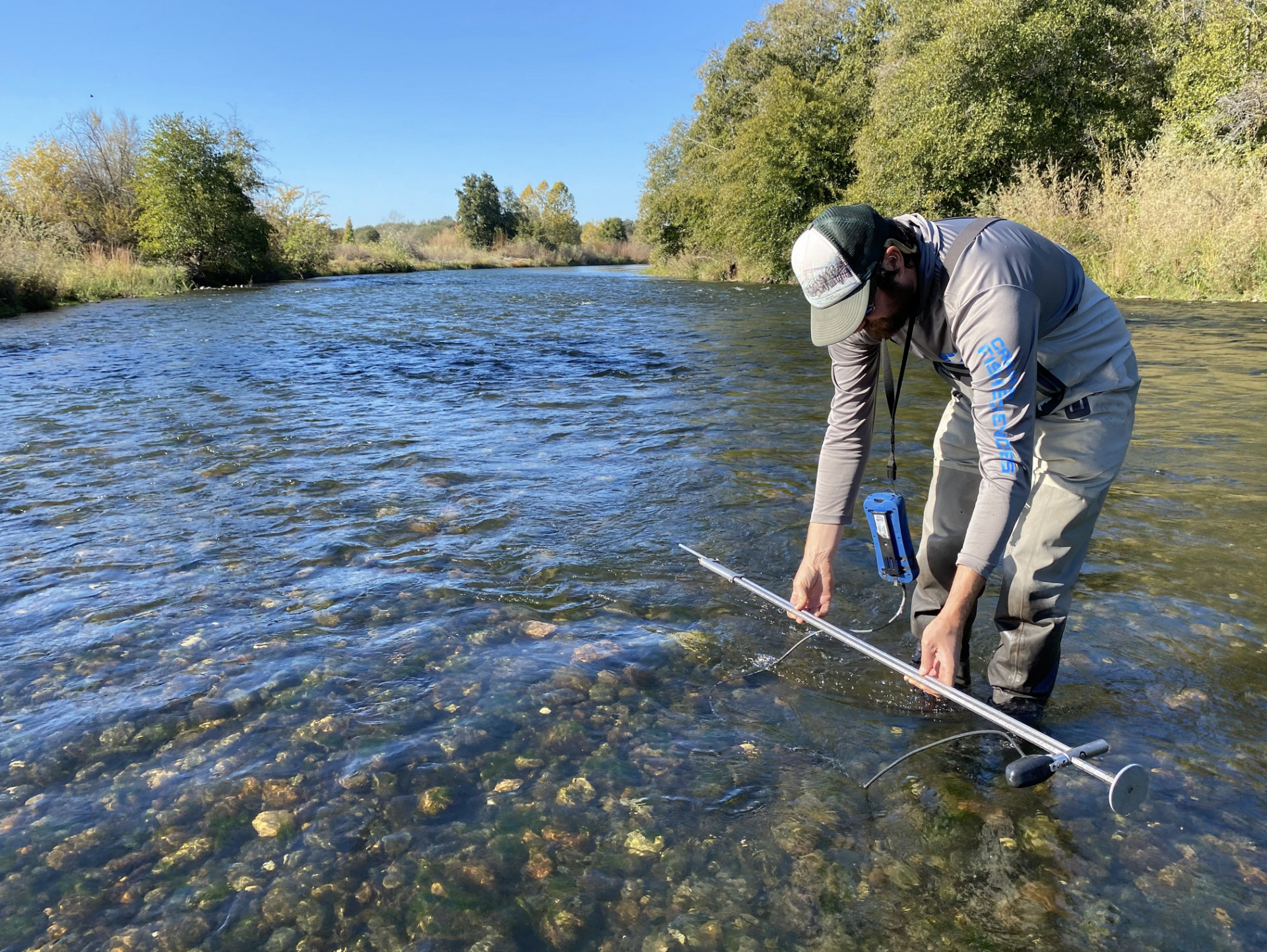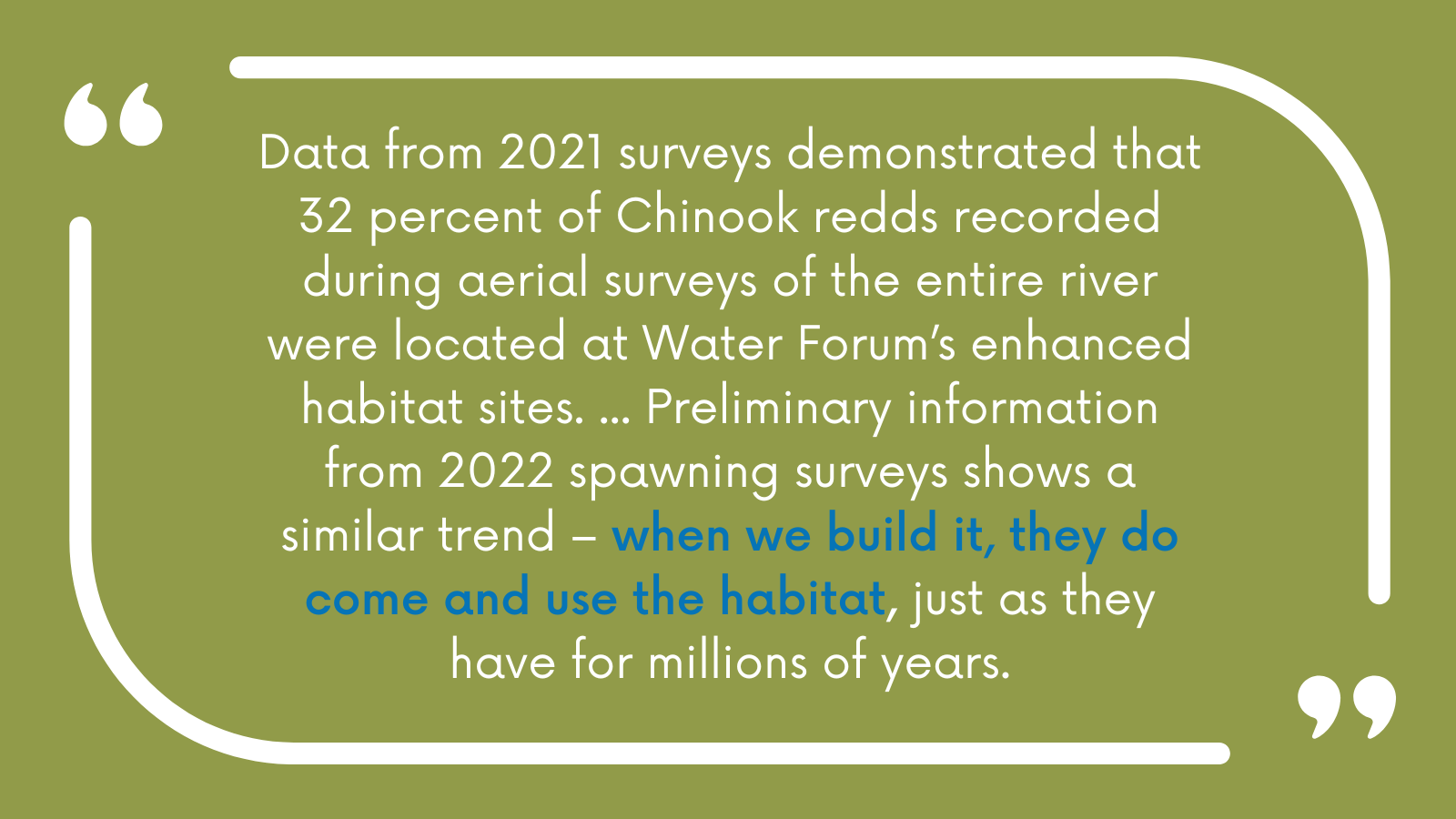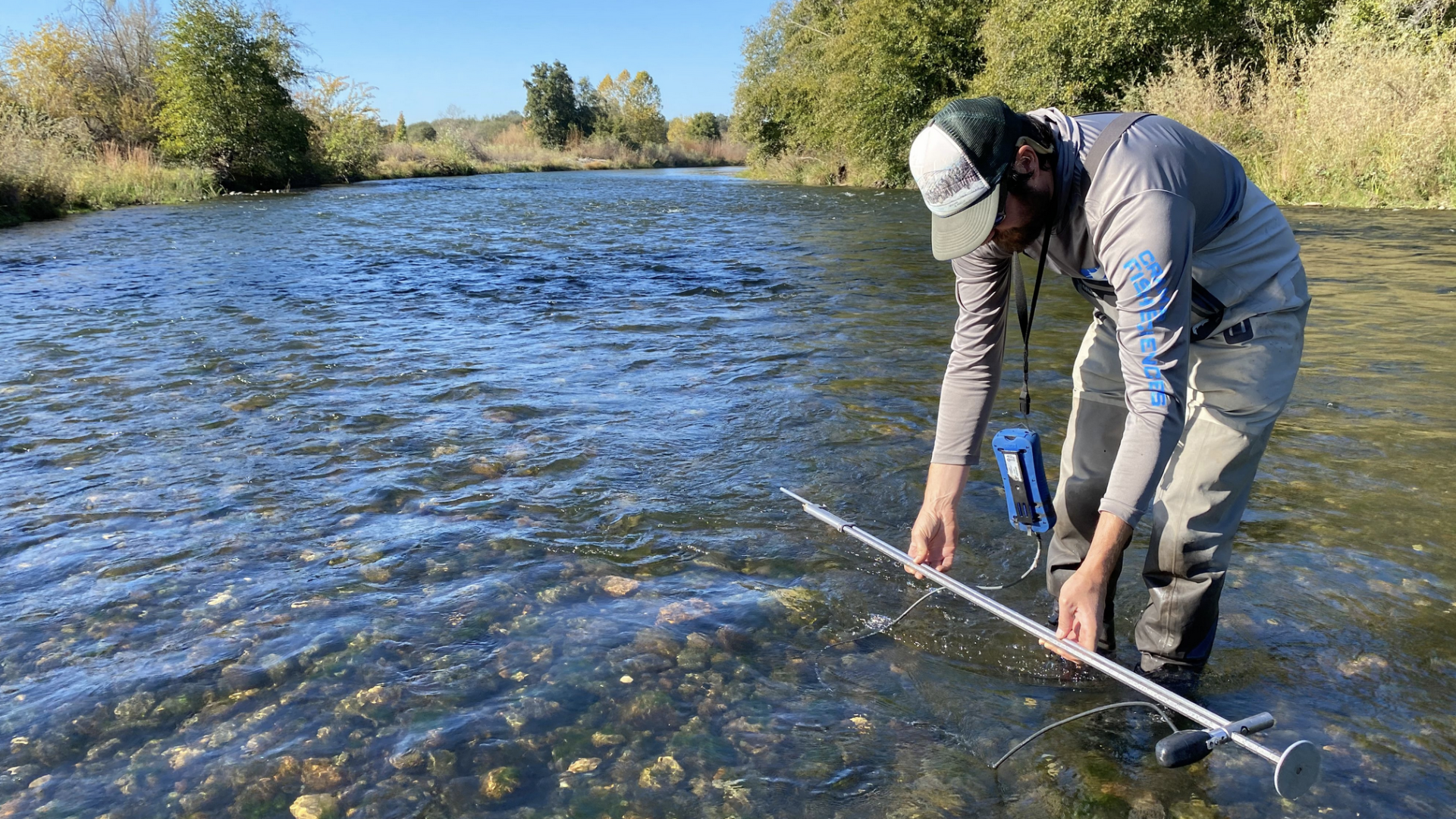
By Erica Bishop
The Water Forum and its federal and state partners have invested millions of dollars over the past 15 years to enhance salmon spawning and rearing habitat in the Lower American River. In this blog post, we want to highlight one way that the Water Forum, with its consultant, Cramer Fish Sciences, monitors the projects and helps to answer a critical question: If You Build It, Do They Come?
Since 2008, the Water Forum has implemented numerous projects to replenish coarse gravel in the Lower American riverbed to create a spawning habitat for fall-run Chinook salmon and Central Valley steelhead. These native species require coarse riverbed gravels to create the redds, or nests, for their eggs.
Unfortunately, the gravel they need — ranging from 3/8 to 4 inches in diameter — can no longer move naturally downstream into the Lower American River to replenish spawning habitat since Folsom and Nimbus Dams were completed nearly 70 years ago. This means the spawning habitat below the dam has degraded as this “right-sized” sediment has been washed away through natural processes and replaced with fine sediment and large cobbles that are not good for spawning.

“During field surveys, we see areas where the fish will dig up each other’s nests because there’s so little habitat available,” says Kirsten Sellheim, a senior scientist with Cramer. “The Lower American River is so habitat-limited that anything we can do to increase habitat makes a difference.”
This fall, Cramer crews, overseen by Sellheim and in coordination with the California Department of Fish and Wildlife (CDFW), are walking and floating along miles of the river to assess the extent of salmon redds, and especially how many of those redds are in the fresh gravel placed by the Water Forum. They record individual redd locations using GPS coordinates and measure each redd’s dimensions, water depth, gravel size, and other characteristics. This helps determine how intensively the enhanced areas are used and the habitat types each fish species prefers.
And, for the first time, the survey data is being uploaded to a new data portal so it can be shared in near real-time with other agencies, including CDFW, U.S. Fish and Wildlife Service, and U.S. Bureau of Reclamation, which operates Folsom Dam.
The work is funded by a $5 million grant from Proposition 68 administered by the California Natural Resources Agency. The money covers 2022 costs for constructing the enhanced spawning habitat and pre- and post-construction surveys and monitoring. It is combined with funds from Reclamation that supported designs, modeling and permitting for this year’s sites.
Since 2018, 27 acres of spawning habitat and 15 acres of rearing habitat have been enhanced on the American through the Water Forum’s habitat enhancement program. This program, funded by local, state, and federal agencies, has been implementing projects since 2008.

In a previous study published in 2013 in the journal River Research and Applications, scientists found that the Lower American River gravel enhancement was effective in increasing Chinook salmon and steelhead spawning. The study analyzed the Water Forum’s habitat projects at the Sailor Bar and Sunrise sites and recorded thousands of spawning redds where none had been previously seen.
Sellheim, a study co-author, said the surveys now underway shed more light on the habitat preferences of salmon and steelhead and the spawning success that occurs due to Water Forum’s work in the river. Data from 2021 surveys demonstrated that 32 percent of all Chinook redds recorded during aerial surveys of the entire river were located at Water Forum’s enhanced habitat sites. Our 2021 project at Ancil Hoffman Park also supported 30 percent of all steelhead redds counted on the Lower American River last season. Preliminary information from 2022 spawning surveys shows a similar trend – when we build it, they do come and use the habitat, just as they have for millions of years.
The Water Forum’s work is just one part of a more significant effort to sustain wild-spawning anadromous (ocean-going) fish in the Lower American River. Although a hatchery on the river produces millions of juvenile salmonids, wild-spawning fish are known to be more resilient to environmental change. They are also simply a unique natural treasure in an urban river like the American.
Erica Bishop is Program Manager for the Water Forum.

